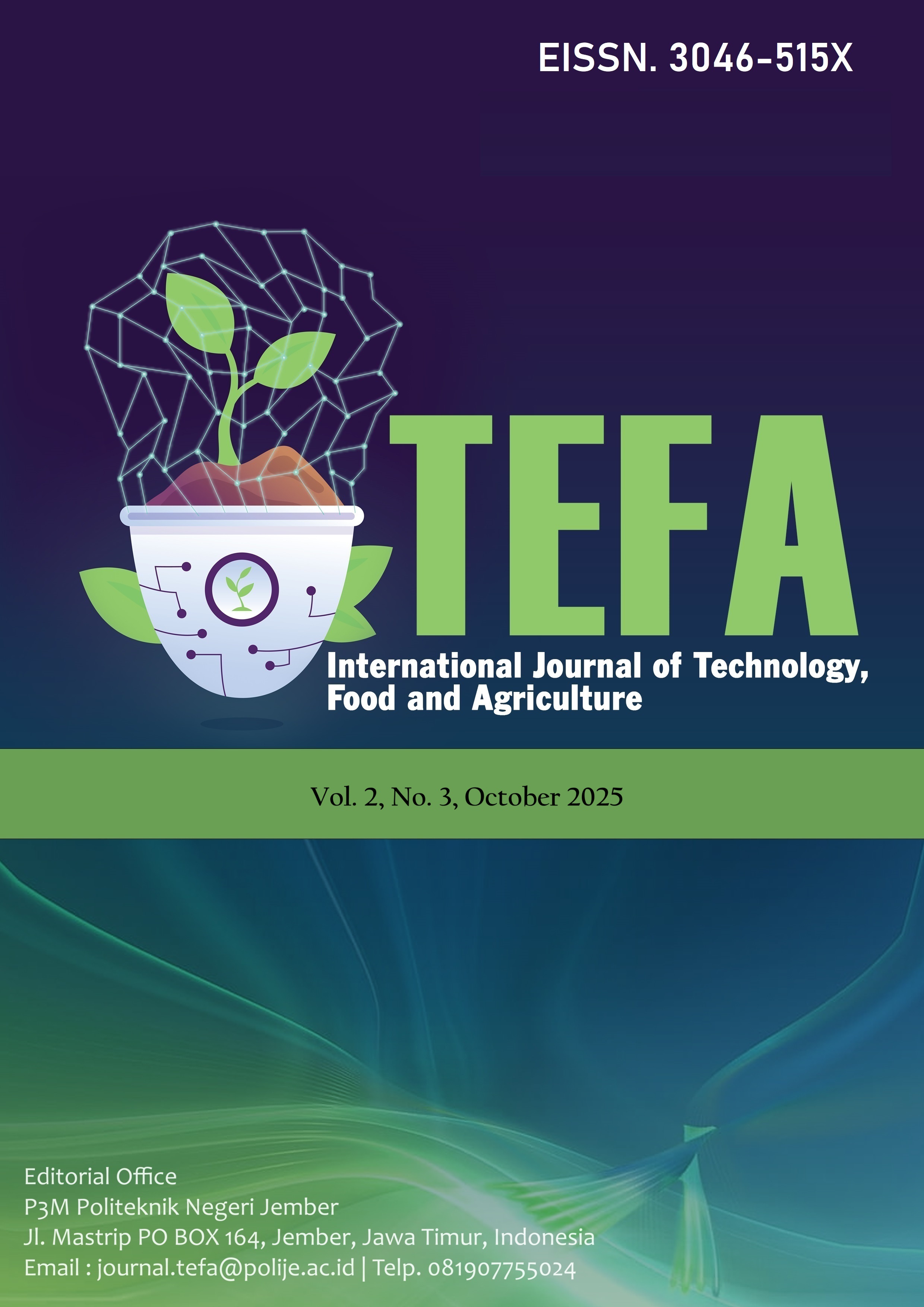Development of Robotics Learning Modules based on IoT and ESP32
DOI:
https://doi.org/10.25047/tefa.v2i3.5885Keywords:
mobile-robot, IoT, ESP32Abstract
This study aims to develop a transporter robot as a learning tool for elementary and secondary school students to introduce them to robotics. The robot features a differential drive system and a lifting arm akin to a forklift system. The robot is controlled using an ESP32 microcontroller and connected to an Android application through a Firebase cloud database. Utilizing an IoT platform, the training can be conducted online, allowing students to control the robot remotely while it remains at the training location. The transporter robot is designed to provide an interactive and hands-on learning experience in robotics, enabling students to grasp fundamental concepts in robotics, programming, and control systems. The differential drive system offers excellent maneuverability, while the lifting arm allows the robot to perform tasks such as lifting and moving objects, adding functional aspects to the learning process. Test results indicate that the robot performs well under online control, with fast and accurate responses to commands from the Android application. The use of Firebase ensures stable and real-time communication between the robot and the application. This implementation not only enhances the accessibility of robotics training but also enables the development of students' STEM skills in a more flexible and affordable manner. The study concludes that an ESP32-based transporter robot with online control via an Android application and Firebase cloud database can be an effective and innovative learning tool. This tool aims to enhance students’ STEM skills -especially in programming, control systems, and mechanical design- through interactive, real-world applications.
References
[1] R. Y. Khalil, H. Tairab, A. Qablan, K. Alarabi, and Y. Mansour, “STEM-Based Curriculum and Creative Thinking in High School Students,” Educ Sci (Basel), vol. 13, no. 12, p. 1195, Nov. 2023, doi: 10.3390/educsci13121195.
[2] N. M. Holincheck, T. Kraft, T. M. Galanti, C. K. Baker, and J. K. Nelson, “‘Everybody Was Included in the Conversation’: Teachers’ Perceptions of Student Engagement in Transdisciplinary STEM Learning in Diverse Elementary Schools,” Educ Sci (Basel), vol. 14, no. 3, p. 242, Feb. 2024, doi: 10.3390/educsci14030242.
[3] E. A. Padilla-García, R. D. Cruz-Morales, J. González-Sierra, D. Tinoco-Varela, and M. R. Lorenzo-Gerónimo, “Design, Assembly and Control of a Differential/Omnidirectional Mobile Robot through Additive Manufacturing,” Machines, vol. 12, no. 3, p. 163, Feb. 2024, doi: 10.3390/machines12030163.
[4] R. L. Ponzoni, A. S. C. A. V. Boas, V. E. Monteiro, and D. de A. Fernandes, “Wirelessly teleoperated differential wheeled chassis of the robot on the ESP32-WROOM-32 MCU module,” in 2023 Latin American Robotics Symposium (LARS), 2023 Brazilian Symposium on Robotics (SBR), and 2023 Workshop on Robotics in Education (WRE), IEEE, Oct. 2023, pp. 625–630. doi: 10.1109/LARS/SBR/WRE59448.2023.10332947.
[5] A. Koushal, R. Gupta, F. Jan, K. Kamaldeep, and V. Kumar, “Home Automation System Using ESP32 and Firebase,” in 2022 Seventh International Conference on Parallel, Distributed and Grid Computing (PDGC), IEEE, Nov. 2022, pp. 228–231. doi: 10.1109/PDGC56933.2022.10053309.
[6] E. A. Padilla-García, R. D. Cruz-Morales, J. González-Sierra, D. Tinoco-Varela, and M. R. Lorenzo-Gerónimo, “Design, Assembly and Control of a Differential/Omnidirectional Mobile Robot through Additive Manufacturing,” Machines, vol. 12, no. 3, p. 163, Feb. 2024, doi: 10.3390/machines12030163.
[7] P. Verma, J. M. Olm, and R. Suarez, “Traffic Management of Multi-AGV Systems by Improved Dynamic Resource Reservation,” IEEE Access, vol. 12, pp. 19790–19805, 2024, doi: 10.1109/ACCESS.2024.3362293.
[8] M. I. Tarrés-Puertas, V. Costa, M. Pedreira Alvarez, G. Lemkow-Tovias, J. M. Rossell, and A. D. Dorado, “Child–Robot Interactions Using Educational Robots: An Ethical and Inclusive Perspective,” Sensors, vol. 23, no. 3, p. 1675, Feb. 2023, doi: 10.3390/s23031675.
[9] J. Heikkinen, T. Minav, and A. D. Stotckaia, “Self-tuning parameter fuzzy PID controller for autonomous differential drive mobile robot,” in 2017 XX IEEE International Conference on Soft Computing and Measurements (SCM), IEEE, May 2017, pp. 382–385. doi: 10.1109/SCM.2017.7970592.
[10] V. R. N and A. T. Mathew, “Design, simulation and implementation of cascaded path tracking controller for a differential drive mobile robot,” in 2015 International Conference on Advances in Computing, Communications and Informatics (ICACCI), IEEE, Aug. 2015, pp. 1085–1090. doi: 10.1109/ICACCI.2015.7275754.
[11] A. Stefek, T. Van Pham, V. Krivanek, and K. L. Pham, “Energy Comparison of Controllers Used for a Differential Drive Wheeled Mobile Robot,” IEEE Access, vol. 8, pp. 170915–170927, 2020, doi: 10.1109/ACCESS.2020.3023345.
Downloads
Published
How to Cite
Issue
Section
License
Copyright (c) 2025 Ahmad Rofi'i, Nuzula Afianah, Syamsiar Kautsar, Aditya Wahyu Pratama, Aditya Wahyu Winadi, Fendik Eko Purnomo, Salsabila Liandra Putri, Dicky Adi Tyagita, Mochammad Irwan Nari, Faisal Lutfi Afriansyah

This work is licensed under a Creative Commons Attribution-ShareAlike 4.0 International License.




